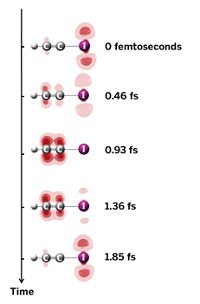Advertisement
Grab your lab coat. Let's get started
Welcome!
Welcome!
Create an account below to get 6 C&EN articles per month, receive newsletters and more - all free.
It seems this is your first time logging in online. Please enter the following information to continue.
As an ACS member you automatically get access to this site. All we need is few more details to create your reading experience.
Not you? Sign in with a different account.
Not you? Sign in with a different account.
ERROR 1
ERROR 1
ERROR 2
ERROR 2
ERROR 2
ERROR 2
ERROR 2
Password and Confirm password must match.
If you have an ACS member number, please enter it here so we can link this account to your membership. (optional)
ERROR 2
ACS values your privacy. By submitting your information, you are gaining access to C&EN and subscribing to our weekly newsletter. We use the information you provide to make your reading experience better, and we will never sell your data to third party members.
Materials
Bending Crystals By Light
Azobenzene double-bond isomerization, induced by UV light, translates into mechanical motion in platelike microcrystals
by Bethany Halford
May 18, 2009
| A version of this story appeared in
Volume 87, Issue 20
Changes in azobenzene's molecular geometry can be translated into mechanical motion in a crystal, according to chemists in Japan. Hideko Koshima, Naoko Ojima, and Hidetaka Uchimoto of Ehime University show that platelike microcrystals of trans-4-(dimethylamino)azobenzene move in response to ultraviolet light (J. Am. Chem. Soc., DOI: 10.1021/ja8098596). When irradiated at 365 nm, the microcrystals bend away from the light, reaching a maximum deflection angle of 180° in half a second. The crystals return to their original shape 30 seconds after the light is shut off. The researchers attribute the motion to the trans-cis isomerization of the azobenzene as shown: UV light prompts some of the molecules to isomerize to the cis form, which bends the microcrystal. Thermal isomerization back to the trans form restores the crystal's original shape. "To our knowledge, trans-cis photoisomerization of azobenzene chromophores has not been observed in the crystalline state because of the large geometric changes that would be required in such densely packed crystal lattices," the researchers write. Nevertheless, they confirmed this photoisomerization near the surface of the microcrystals by atomic force microscopy. The light-induced motion could be harnessed for molecular machines, the Japanese team suggests.
Rapid bending of the platelike microcrystals (about 525 µm long) of trans-4-(dimethylamino)azobenzene takes place when the sample is irradiated with 365 nm light. The microcrystals whip forward in the direction opposite to the light source. After 30 seconds, the crystals return to the initial flat shape.
J. Am. Chem. Soc.





Join the conversation
Contact the reporter
Submit a Letter to the Editor for publication
Engage with us on Twitter